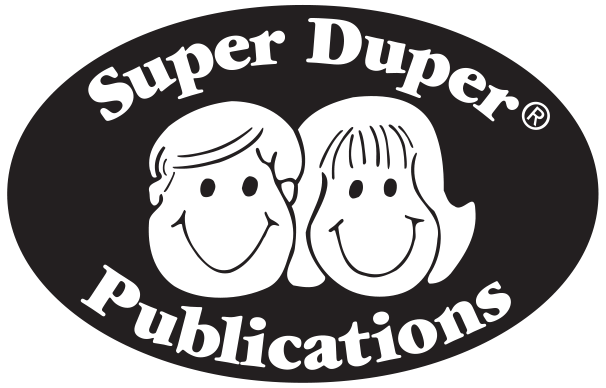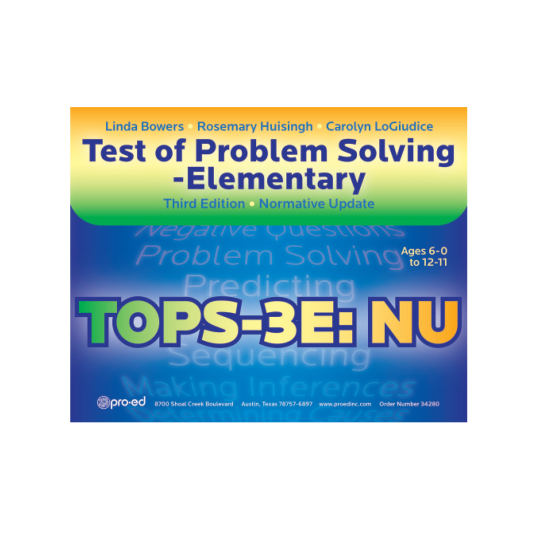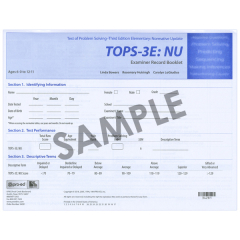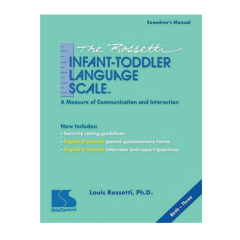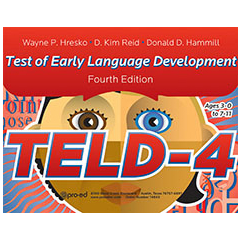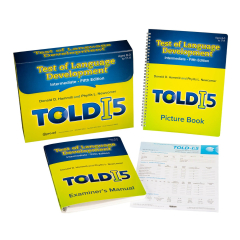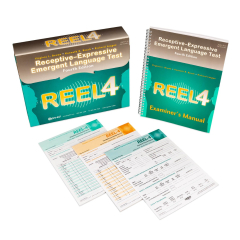TOPS-3E: NU Complete Kit
Ages 6;0 through 12;11
 FREE SHIPPING over $75
FREE SHIPPING over $75 90-Day Return Policy
90-Day Return Policy We Accept Purchase Orders!
We Accept Purchase Orders!
More Information
| Author(s) | Linda Bowers, Rosemary Huisingh and Carolyn LoGiudice |
|---|---|
| Topic | Auditory Processing, Critical Thinking, Hearing and Sign Language, Tests, Linguisystems |
| Brand | LinguiSystems |
More Information
TOPS-3E: NU Complete Kit
- Ages: 6;0 through 12;11
- Testing time: 35 minutes
- Administration: Individual
- Norm-referenced: standard scores, raw scores, age equivalents, percentile ranks, and Problem Solving Index
- Qualification Level: B
The Test of Problem Solving-3rd Edition: Normative Update (TOPS-3E: NU) assesses a school-age child’s ability to integrate semantic and linguistic knowledge with reasoning ability by way of picture stimuli and verbal responses.
The TOPS-3E: NU focuses on students’ linguistic ability to think and reason. Language competence is the verbal indicator of how a student’s language skills affect his ability to think, reason, problem solve, infer, classify, associate, predict, determine causes, sequence, and understand directions. The test focuses on a broad range of language-based thinking skills, including clarifying, analyzing, generating solutions, evaluating, and showing affective thinking.
While other tests may asses students’ thinking skills by tapping mathematical, spatial, or nonverbal potential, the TOPS-3E: NU measures discreet skills that form the foundation of language-based thinking, reasoning, and problem-solving ability.
Although the skills tested on the TOPS-3E: NU are necessary for developing social competence, it is not primarily a test of pragmatic or social language skills. Rather, it should be part of a battery of tests and observations used to assess pragmatic competence.
New Features
- Characteristics of the normative sample (stratified by age relative to region, gender, ethnicity, and socioeconomic factors, and other critical variables) are the same as those reported for the school-age population by the ProQuest Statistical Abstract of the United States, 2016 (ProQuest, 2016).
- Authors calculated The Problem Solving Index (identified before as the Total Score) as a standard score with a mean of 100 and a standard deviation of 15.
- Authors evaluated each item on the test using both conventional item analysis to choose “good” items and differential item analyses to find and eliminate potentially biased items.
- Authors thoroughly examined the index score for floor and ceiling effects.
- Authors subjected the test to a diagnostic accuracy analyses (particularly rigorous techniques involving the computation of the receiver operating characteristic/area under the curve (ROC/AUC) statistic).
- The new Examiner’s Manual includes more extensive and detailed information on the administration, interpretation, and statistical characteristics of the test.
Description of the Test
The TOPS-3E: NU has three components: an Examiner’s Manual, Examiner Record Booklets, and a Picture Book. The Examiner’s Manual includes a comprehensive discussion of the test’s theoretical and research-based foundation, item development, standardization, administration and scoring procedures, norm tables, and guidelines for using and interpreting the test’s results. The Examiner Record Booklet provides space to record responses and transform the raw score to an age equivalent, percentile rank, and the Problem Solving Index. The test kit also includes a Picture Book, which includes the picture stimuli for the test items.
The authors conducted reliability and validity studies with individuals who have typical language ability and individuals previously diagnosed with a language impairment or received other special education services. The average coefficient alpha is .82 for the Problem Solving Index. Studies were examined the ability of the test to differentiate students who receive special education services or have language impairments from those who do not. The results demonstrate that a Problem Solving Index cutoff score of 90 resulted in a sensitivity of .75, a specificity of .85, and a ROC/AUC of .74 for differentiating students who receive special education services. The cutoff score of 92 resulted in a sensitivity of .69, a specificity of .89, and a ROC/AUC of .73 for differentiating students who have a language impairment. Validity of the test composites correlates to the Universal Nonverbal Intelligence Test–Group Abilities Test (UNIT-GAT; Bracken & McCallum, in development). The coefficient for the Analogic Reasoning subtest was .73, and the coefficient for the Quantitative subtest was .89, both very large.
Test of Problem Solving-3rd Edition: Normative Update:
- Examiner’s Manual
- Picture Book
- 25 Examiner Record Booklets
- Boxed (©2018)
-
TOPS3Really nice tool
